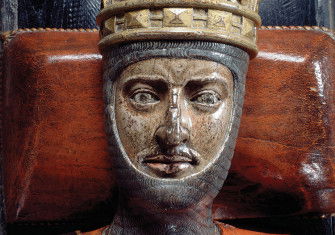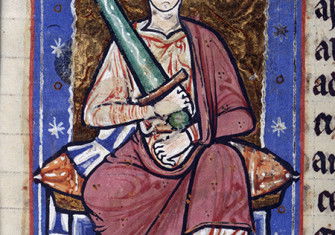Archbishop Wulfstan: England’s Forgotten Lawmaker
As Anglo-Saxon England faced conquests and apocalypse, Archbishop Wulfstan saw hope for the kingdom in a radical restructuring of society.
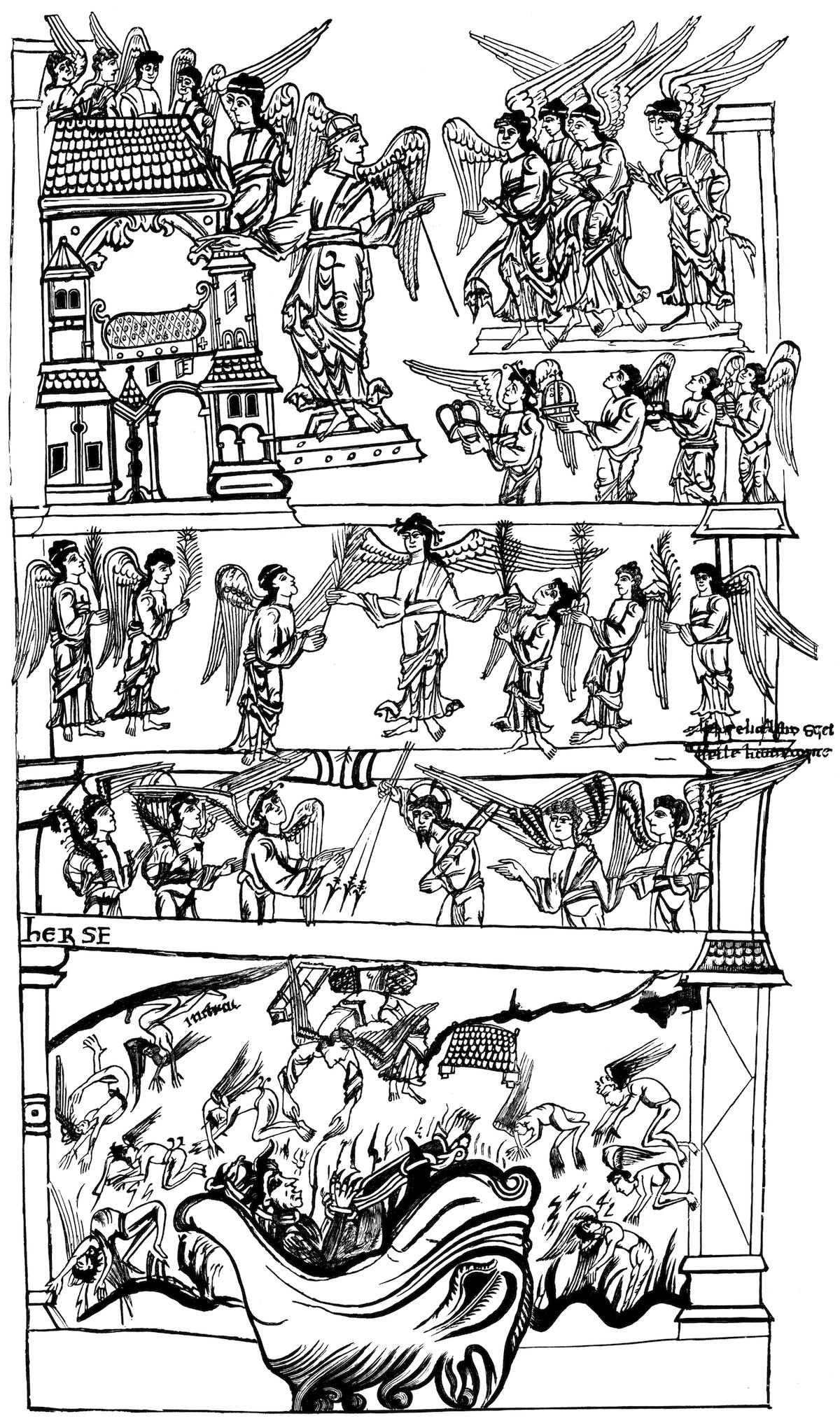
The meeting of England’s royal council at York on 16 February 1014 must have been a very glum affair. Ostensibly, its purpose was to consecrate a new bishop of London, yet none present could ignore the numerous catastrophes that had devastated the kingdom over the last ten years. Repeated invasions of England by the Danish king Swegn Forkbeard had left the people terrorised, the military defeated and the countryside ravaged. Just two years earlier, the invaders had imprisoned, tortured and ultimately executed the archbishop of Canterbury. In December 1013, Swegn formally declared himself the kingdom’s new ruler, while England’s feckless king Æthelred (famously nicknamed Unræd, ‘poorly counselled’) fled the realm for sanctuary in France. Swegn’s reign was a brief one – he died just five weeks later, shortly before the council convened – but his death offered little comfort: Æthelred remained abroad and Swegn’s son Cnut promised to be as aggressive and ambitious as his father. England was leaderless and on the verge of ruin.
At the council’s meeting the gathering’s host, Archbishop Wulfstan II of York, rose to address England’s leading officials in language more typical of an Old Testament prophet than an 11th-century cleric. Urging his audience to ‘recognise the truth’, Wulfstan reminded them that, with disaster looming, the judgement of God was at hand. He accused the English and their leaders of regicide, fratricide, enslaving their own people and betraying their faith – sins greater even than those of the heathen Vikings whom God had sent as punishment. Yet all was not lost: there was still time to repent and to ‘love God and follow God’s laws’. He exhorted his listeners to:
order our words and deeds rightly, cleanse our thoughts thoroughly, and keep our oaths and pledges conscientiously, and keep some faith between us without betrayal. And let us often reflect upon the great Judgement to which we all must go, and let us save ourselves from the welling fire of hellish torment, and gain for ourselves the glories and joys that God has prepared for those who work his will in the world!
This homily, titled the Sermo lupi ad Anglos (‘Sermon of the Wolf to the English’), has been described as a landmark of English prose, one of the literary masterpieces of the Anglo-Saxon period and among the most significant discussions of the relationship between theology and politics of the early Middle Ages. Ultimately the February meeting did little to slow the Danish conquest, but to those present the Sermo was more than just a tour de force of ecclesiastical oratory. Its thunderous language and moral urgency perfectly encapsulated the crises England faced. More importantly, its admonitions for just and virtuous governance set forth in vivid terms the spiritual and political steps necessary for the kingdom’s rebirth not just as a safer, more secure nation but as a truly Christian society fully deserving of the grace and protection of God.
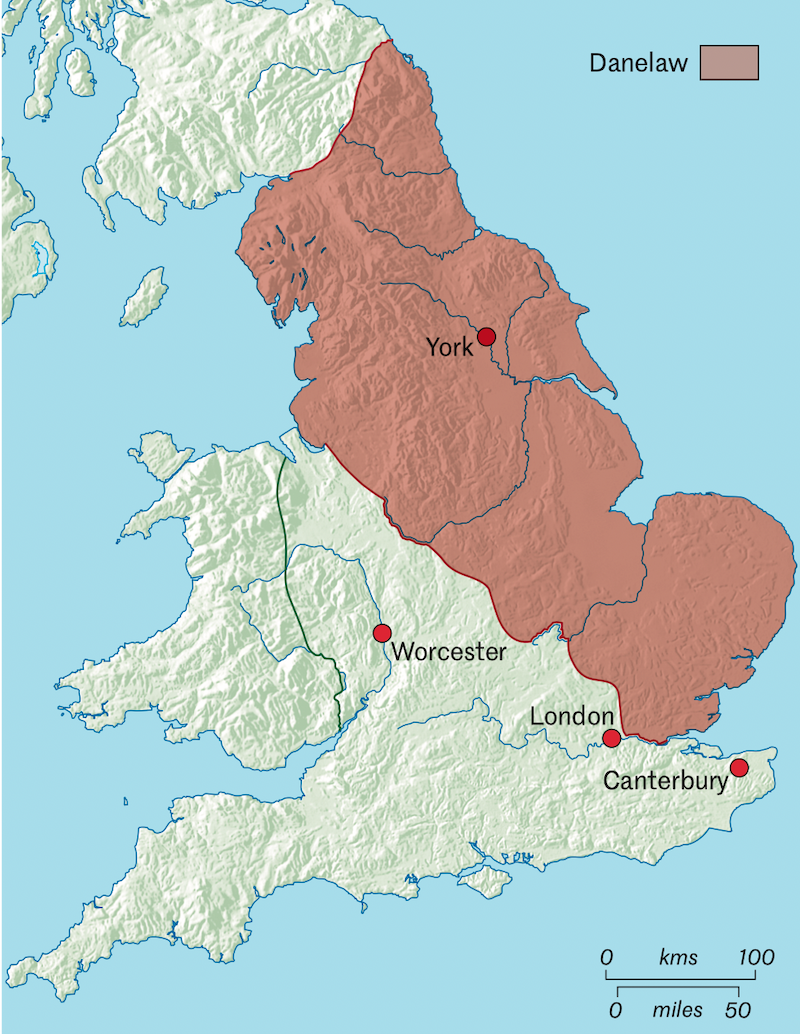
An influential unknown
Archbishop Wulfstan, the anniversary of whose death in 1023 we commemorate this year, was the most prominent English churchman of his day. Over the course of his career, he held the bishoprics of London and Worcester, as well as the archbishopric of York. He composed more than 50 surviving homilies as well as numerous tracts on politics, society, religion and ecclesiastical administration. He was also the primary author of the legislation of Æthelred and Cnut. Even after his death, his legal and political writings continued to shape English law well beyond the Norman Conquest. Perhaps most significantly, he was one of Early Medieval Europe’s most innovative and original political theorists. His works are among the first to treat society as made up of three parts (those who fight, those who work and those who pray); he developed a theory
of a ‘stakeholder society’ long before such ideas entered common political discourse; and his utopian vision of an ideal Christian kingdom established a new model for the interaction between Church and state. Surprisingly, though, Wulfstan remains virtually unknown outside of a small circle of literary scholars and historians. The 1,000th anniversary of his death thus seems the perfect time to lure the Wolf from his lair.
Of Wulfstan’s early life we know virtually nothing. He was likely born sometime between 940 and 960, possibly in the West Midlands. No evidence survives of his parentage or family status, though later documents do attest to at least two siblings. His education and early career likewise remain a mystery, though a monastic vocation seems most probable. His name appears in no monastery record, however, nor is there any indication of him achieving the sort of prominence that would merit appointment to one of England’s most prestigious bishoprics.
Wulfstan only enters the historical record with his consecration as bishop of London in 996. Though not yet England’s capital, London’s growing economic importance made its diocese one of the most influential – and politically complex – in the kingdom. The bishop’s access to London’s wealth and influence meant that he had considerable sway at court. For a weak king such as Æthelred, an ambitious bishop backed by London’s resources could become a formidable adversary. To minimise the threat, kings ensured that London’s bishops held fewer lands than their peers and had fewer means to generate income, making them as reliant as possible on the goodwill of the ruler. For Wulfstan, then, being chosen as bishop of London gave him access to the court and a preeminent place in the English Church, but it required political nimbleness as well. Even a weak king could be a powerful enemy.
Yet the challenges Wulfstan faced did not come from his position alone. Æthelred’s court was rife with factionalism. The king had come to power as a child in 978 following the murder of his step-brother Edward (later canonised as ‘the Martyr’). Although Æthelred himself was too young to participate in the murder, the fact that it took place at, or near, the castle of his mother Ælfthryth left him unable to fully escape the shadow of guilt. For the first few years of his reign, Æthelred was guided by a group of reform-minded churchmen who sought a closer identification of the Crown with the Church, a more orthodox conception of Christian society, and the eradication of secular influence – particularly that of the regional aristocracy – over monasteries and other ecclesiastical institutions. Yet by the mid-980s, a bloc of aristocrats hostile to the reformist agenda had gained ascendancy at court and spent much of the next decade attempting to deprive the Church of lands, profit and political influence.
In the mid-990s, a new faction gained power at court under the leadership of the reformist archbishop Ælfric of Canterbury, appointed to that position in 995. Surrounding Ælfric was a rising generation of similarly minded bishops, one of whom was the new bishop of London. Wulfstan received his diocese a year after Ælfric’s promotion, making it likely that the archbishop orchestrated his appointment. The two seem to have been friends as well as allies; Wulfstan later appears as a beneficiary and executor of Ælfric’s will.
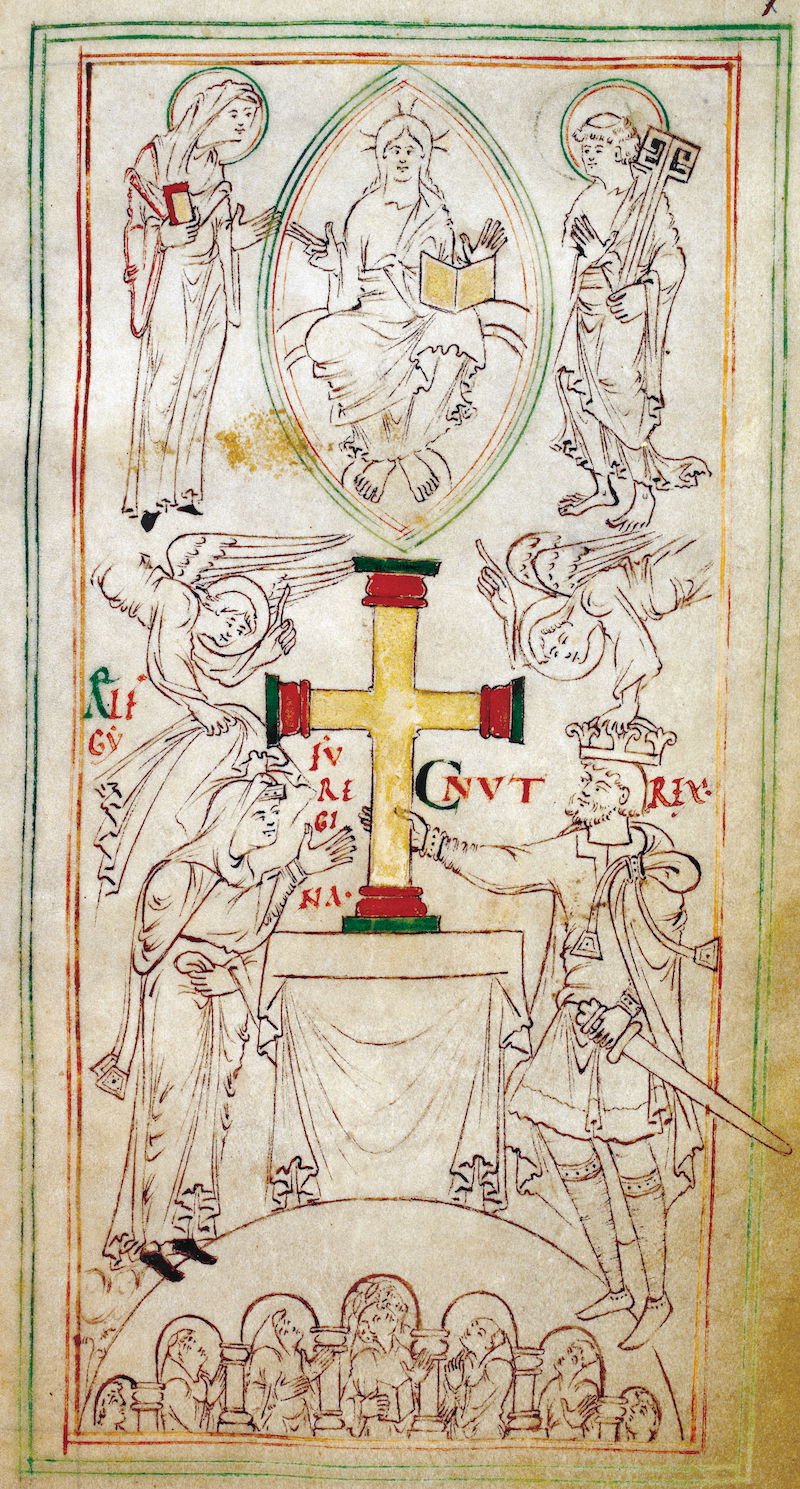
Tears of repentance
The signs of the ecclesiastical faction’s growing influence can be seen in a series of remarkable charters issued by Æthelred, starting in 993. Not only did these charters restore to the Church lands Æthelred had previously confiscated, they also included deeply personal expressions of penance. One charter reads:
now, fully before God, with the tearful contrition of my heart, I repent and restore freely that which rightly belongs to this place, hoping to receive the tears of my repentance and to be loosened from the fetters of my earlier ignorance by Him, who does not want the death of a sinner, but rather that he convert and live.
Such emotional language is particularly striking as Æthelred himself likely played little role in its drafting. Instead, the ‘personal’ quality of these charters is an elaborate rhetorical facade created by their authors – the bishops in Ælfric’s reformist faction. Their decision to frame the charters in this fashion was savvy: not only did the texts reverse previous royal confiscations, but the language of penance characterised respect for ecclesiastical property rights as an issue that was as much moral as it was legal. To grant lands to the Church was the act of a good king; any further confiscations would jeopardise both the Church’s political support and Æthelred’s very soul.
No evidence exists of Wulfstan drafting any of the penitential charters, but his signature high on many of their witness lists suggests his involvement in the political strategy behind them. Yet Wulfstan’s pen was not inactive during this period. It was during his time in London that Wulfstan composed the earliest homilies to survive in his name. The years leading up to 1000 AD found Europe gripped with fear that the world was about to end. The proliferation of apocalyptic visions in the art and literature of the 990s testifies to the growing anxiety over the coming end times.In the words of one chronicler, ‘it was believed that the order of the seasons and the elements, which had ruled all past ages from the beginning, had fallen into perpetual chaos, and with it had come the end of mankind’.
For Wulfstan, this fear became the source of one of the themes that would dominate his writings for the rest of his career: the imminence of divine judgment. Unlike many of his contemporaries, Wulfstan did not treat the apocalypse simply as something to fear or as the culminating event in human history. Rather, in the homilies composed between 996 and 1000, he wrote of the apocalypse as if it had already arrived. Humanity stood in the very presence of God and could save itself only by repenting now, for ‘each one who proclaims Christian rectitude, but does not live by it or teach it to others as he should, is the Antichrist’.
Wulfstan would return to this theme long after the millennium itself had passed. It was not so much the literal apocalypse that he evoked for his audience as the figurative one. Even if we do not know when Doomsday will come, we must repent our sins and change our ways for, as Wulfstan wrote in the 1016 Sermo lupi, ‘the world is in haste and nears its end!’
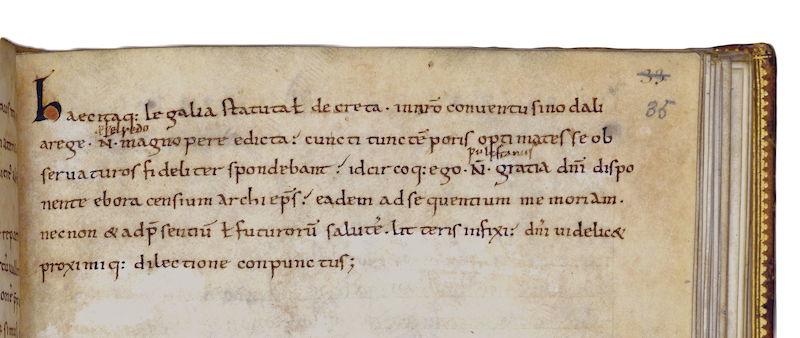
The problem with York
In the year 1002, the reigning archbishop of York died and Wulfstan was named as his replacement. The archbishop of York was second only to the archbishop of Canterbury in ecclesiastical authority, yet occupants of the position had historically been viewed with considerable suspicion by the kings of Anglo-Saxon England. York was far north of the royal seat at Winchester in a region then known as the Danelaw. Established in the late ninth century, the Danelaw consisted of that part of England north of a boundary extending roughly from London in the east to Chester in the west. These lands had been under Viking rule until reconquered by Alfred and his successors Edward the Elder and Æthelstan.
Culturally, the Danelaw was as much Scandinavian as English, and it retained many Danish laws and customs even after it was no longer under Viking rule. As a result, the kings in the south could not necessarily rely on its loyalty in their ongoing conflict with the Danes. Previous archbishops of York had betrayed their kings on more than one occasion, meaning that – as with the bishopric of London – kings sought ways of keeping them dependent on the ruler’s goodwill. One method was to grant the archbishop of York the bishopric of Worcester as well. Worcester Cathedral was among the wealthiest ecclesiastical foundations in England – far richer than the relatively impoverished York Cathedral – but it was located outside the Danelaw and nearer Winchester so that the king could keep an eye on his archbishop. The authority of the archbishop may have lain in the north, but his income and resources were largely dependent on the south.
For Wulfstan, the bishopric of Worcester was a godsend. The position not only brought increased land and responsibility, it also gave him regular access to one of the finest libraries in England. These must have been especially welcome as York Cathedral, after two centuries of Viking raids, was in a state of disrepair. Upon his promotion to archbishop, Wulfstan immediately set about recovering lost cathedral lands and setting forth in clear terms the responsibilities of the bishops under him. To Wulfstan, bishops were of paramount importance to the moral wellbeing of society. However, if they neglected their duties they placed the entire kingdom at risk of damnation. As he often repeated in his writings, ‘if bishops fail by mumbling with their mouths when they should shout, woe to them for that silence!’
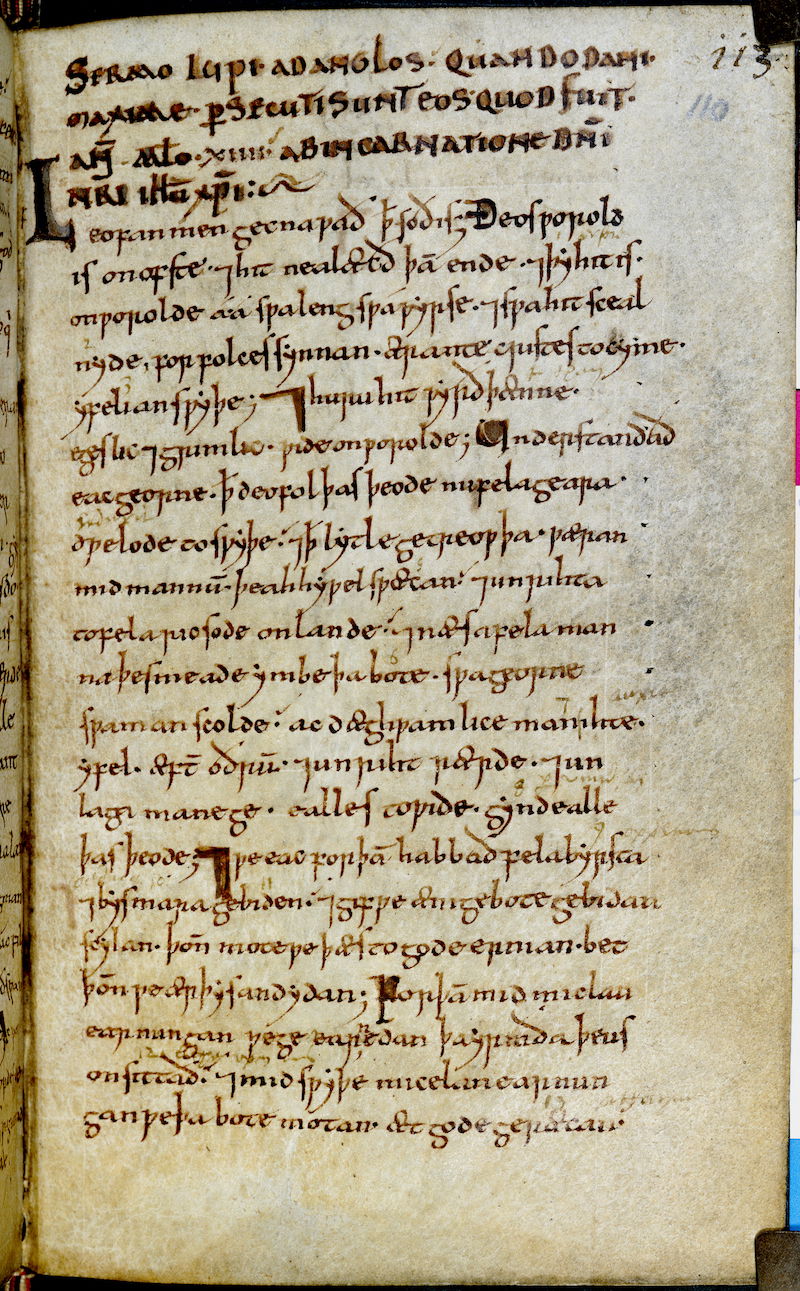
Lawmaker
Archbishop Ælfric died in 1005, but Wulfstan had learned his mentor’s lessons well. Leveraging both his skill as a homilist and his political acumen, Wulfstan rose swiftly to become a leading figure at court. His influence was such that, from 1008 until his death in 1023, he served as the primary author of all surviving acts of royal legislation. The laws may have originated with the king, but they reflected Wulfstan’s priorities and were written in his voice. Wulfstan saw little difference between legal and homiletic composition; his laws are often indistinguishable from sermons and his sermons echo his laws.
Wulfstan’s legislation makes for surprising reading. It dealt with such basic matters as the fulfilment of military obligations and the standardisation of weights and measures, but it also preached virtue and called for moral reformation. His were among the first English laws to limit the use of the death penalty, restrict overly harsh punishments for minor transgressions and recognise poverty as a mitigating factor in crime.
For Wulfstan the goal of both law and homily was the same: the transformation of England into an ideal Christian society. He set forth his ideas in The Institutes of Polity, the earliest English work of political theory. In it, he argues that:
each just throne that stands fully as it should rests upon three pillars: first, those who pray; second, those who labour; and third, those who fight. On these three pillars must each throne rightly stand in a Christian polity. If any of them weaken, immediately the throne will tremble; and if any of them fail, then the throne will crumble to pieces, and that will bring the people entirely to ruin.
This is among the first discussions of the so-called ‘three estates’ theory of social organisation that would dominate European political thought throughout the 18th century. Yet Wulfstan’s version differs from the more strictly hierarchical models of his contemporaries. He expands the three estates model to characterise the truly virtuous society as one of mutually dependent stakeholders. For Wulfstan, a properly functioning society depends upon an equal degree of investment by all its members, rich and poor, clerical and lay, royal and non-royal alike. The stability of society relies not only on the top-down rule of king or council, but also on the commitment of the members of each order to fulfil their God-given station.
Central to Wulfstan’s political vision was the notion of returning society to a state of order. The order of the kingdom should reflect the divinely ordained order of creation, yet the kingdom could not achieve this degree of order unless it was also present in the individual souls of its subjects. The ordered kingdom and the ordered soul must both be aligned with God’s plan for the universe. When this order was disrupted – even in just one person – the good of the whole was at risk.
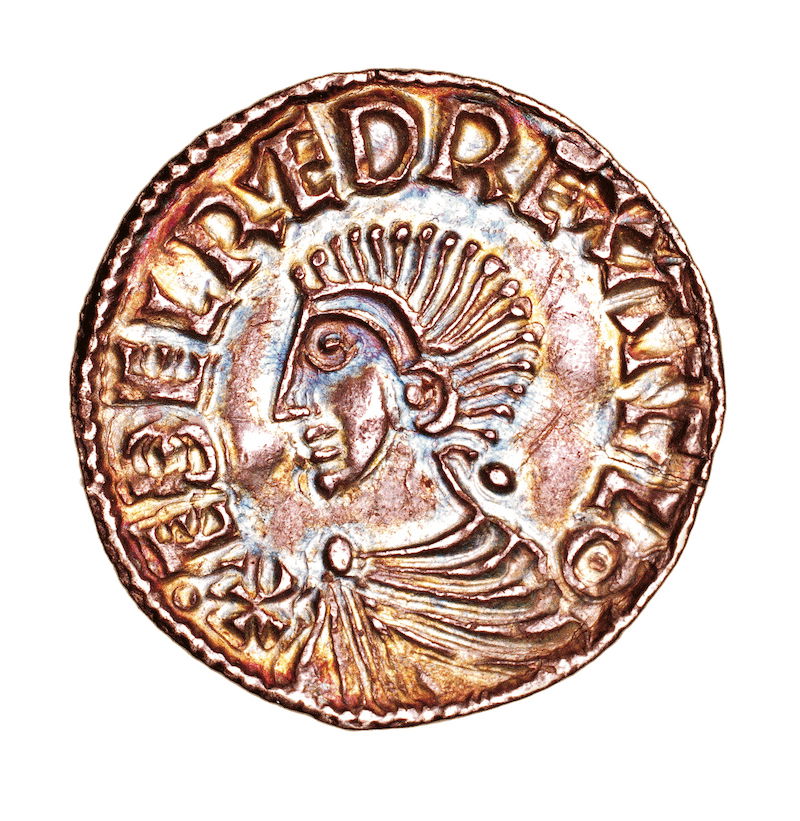
Political prowess
The Danish conquest of 1016 resulted in a brief diminution in power for Wulfstan as well as the loss of the bishopric of Worcester. It appears that the new king, Cnut, doubted the loyalty of Æthelred’s former chief minister, at least initially. This suspicion may have been mutual, as Wulfstan’s writings from this period place increased emphasis on the limits of royal power. It is a testament to Wulfstan’s considerable political prowess, however, that by 1018 he had fully regained his status and influence at court. For the next five years, Wulfstan remained one of Cnut’s leading advisers and the drafter of his laws.
Wulfstan died in 1023, never having fulfilled his goal of transforming England into the ideal Christian kingdom. Yet in his homilies, laws and political tracts, one can find the most far-reaching vision of society to survive from before the Norman Conquest. In many ways, his vision is surprisingly modern. Perhaps more than any of his contemporaries he understood language’s potential to motivate social change and exercise political authority. His view of royal power foreshadows that found in Magna Carta. His idea of a society made up of mutually dependent stakeholders anticipates the Enlightenment conception of a ‘social contract’, which provides the foundation for virtually all modern theories of citizenship and representative government. Even after 1,000 years, though we may not always be fully aware of Wulfstan’s influence, he still prowls among us.
Andrew Rabin is a professor in the English Department at the University of Louisville.



